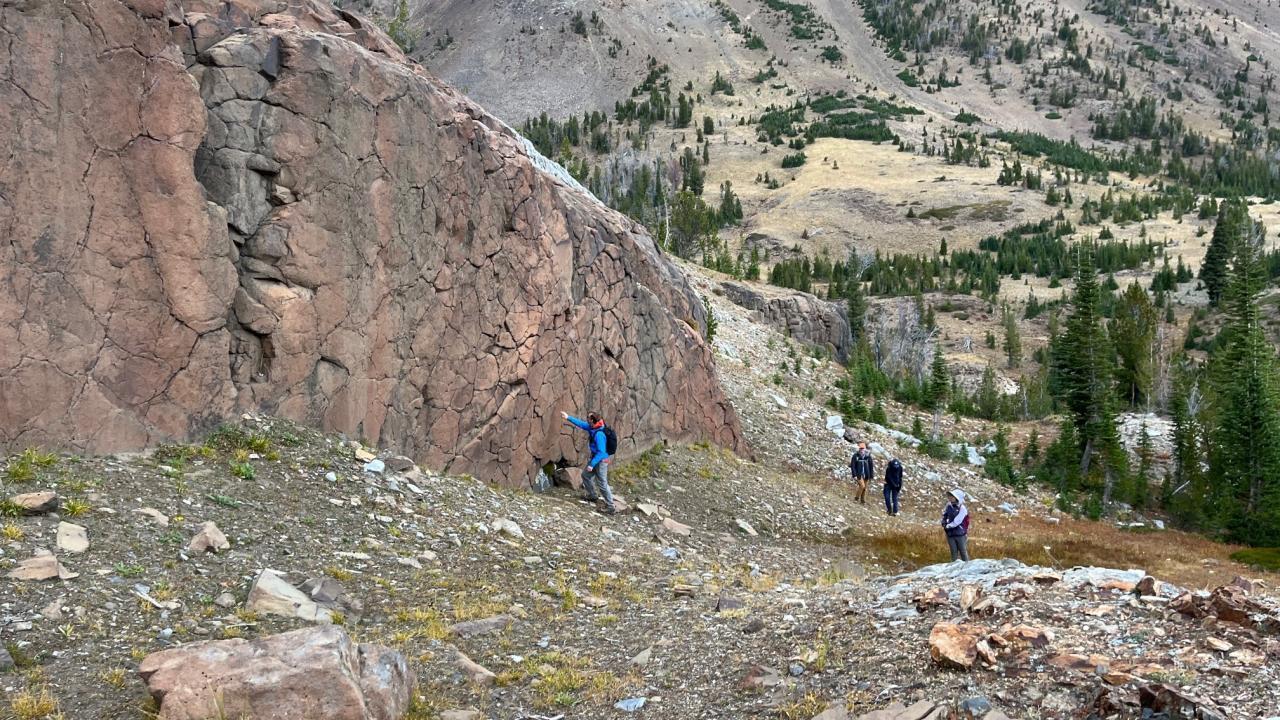
Buried Alive: Carbon Dioxide Release From Magma Deep Beneath Ancient Volcanoes a Hidden Driver of Earth’s Past Climate
“Cryptic Carbon” From Underground Portions of Enormous Volcanic Provinces Contributed to Climate Warming in Earth’s Past
An international team of geoscientists led by a volcanologist at Rutgers University-New Brunswick and including Maxwell Rudolph, associate professor in the UC Davis Department of Earth and Planetary Sciences, has discovered that, contrary to present scientific understanding, ancient volcanoes continued to spew carbon dioxide into the atmosphere from deep within the Earth long past their period of eruptions.
In doing so, the research team has solved a long-standing mystery over what caused prolonged episodes of warming during turning points in Earth’s climate history. The work is detailed in today’s (Oct. 30) issue of the journal Nature Geoscience.
“Our findings are important because they identify a hidden source of CO2 to the atmosphere during moments in Earth’s past when climate has warmed abruptly and stayed warm much longer than we expected,” said Benjamin Black, who led the study and is an associate professor in the Department of Earth and Planetary Sciences at the School of Arts and Sciences. “We think we have figured out an important piece of the puzzle for how Earth’s climate was disrupted, and perhaps just as importantly, how it recovered.”
In the present-day, humans are releasing vastly more carbon dioxide than all active volcanoes put together—but the new findings could shed light on how the planet’s climate will recover if and when human carbon dioxide emissions decrease. “Earth has natural climate control systems – sort of like the thermostat in your house,” Black said. “The question is—are there thresholds beyond which those climate control systems start to break down, making it much harder for climate to recover?”
For decades, scientists have been baffled by climate records showing the failure of the Earth’s atmosphere to recover as quickly as expected after what is known as the end-Permian mass extinction 252 million years ago – the most severe decrease in biodiversity known to have occurred on Earth. The mass extinction has been linked with tremendous volcanic eruptions in Siberia. Even after the eruptions ceased, Earth's climate took nearly 5 million years to stabilize.
“This delayed recovery has long puzzled scientists. Earth’s natural thermostat seems to have gone haywire during and after this event,” Black said. “We noticed that a similar pattern seemed to have occurred at multiple other times in Earth’s history with massive volcanism, and we set out to understand why.”
Modeling carbon emissions from magma
Black and an international team of colleagues looked back in time and found evidence for carbon dioxide emissions from this type of volcanic province that could last millions of years after most surface eruptions had ended. They did this by compiling chemical analyses of the lavas, developing computer models simulating melting inside the Earth, and comparing the results with records of past climate preserved in sedimentary rocks.
Rudolph modeled the amount of magma (molten rock) and the amount of CO2 generated within a rising mantle plume. These models provide a range of values for the total mass of carbon released to the atmosphere as well as the rate at which it is released, he said.
“Once it is released from mantle rocks, some of the carbon can migrate upward through Earth's crust and eventually to the atmosphere. However, the crust acts as a filter, storing some of the ascending magma, where it stays behind and crystallizes rather than rising to the surface and erupting as lava flows,” Rudolph said.
The analyses showed that massive ancient volcanic provinces shut down slowly. At the surface, eruptions may have stopped, but deep in the crust and mantle, magma was still releasing carbon dioxide, leading to prolonged climate warming.
“We call this CO2 from the subsurface magma ‘cryptic carbon’ because it comes from magmas lurking deep in the system,” Black said. “It’s as if the volcanoes were releasing carbon from beyond the grave.”
Black said the findings in the new study are significant because they identify a hidden source of atmospheric carbon dioxide during moments when the climate warmed abruptly. If the volcanoes kept “turning the temperature up,” it could mean the Earth’s thermostat may work better than scientists thought.
Black emphasized that cryptic carbon from volcanoes cannot explain present-day climate change. “The type of volcanism we are investigating is rare, capable of generating enough magma to cover the continental United States half a kilometer deep in lava,” Black said. “This kind of volcanism has not occurred for 16 million years. All the volcanism taking place on the planet today releases less than one percent as much carbon dioxide as human activities.”
But scientists still hope to learn from these past eruptions about current and future climate. “These ancient eruptions appear to be some of the only events in Earth’s history that release carbon on the same scale as humans are doing today,” Black said. “So by studying these eruptions in the deep past we can learn more about how Earth’s climate systems respond to massive release of carbon to the atmosphere.”
These findings are just the beginning of a multi-year effort funded by the National Science Foundation to investigate how cryptic carbon could influence recovery after major disruptions of Earth’s climate.
Other scientists on the study included: Leif Karlstrom of the University of Oregon; Benjamin Mills of the University of Leeds, Leeds, UK; Tamsin Mather, University of Oxford, Oxford, UK; Jack Longman, Northumbria University, Newcastle Upon Tyne, UK; and Andrew Merdith, University of Adelaide, Adelaide, Australia.
This article originally appeared on the UC Davis news website and was adapted from a news release issued by Rutgers University - New Brunswick.
